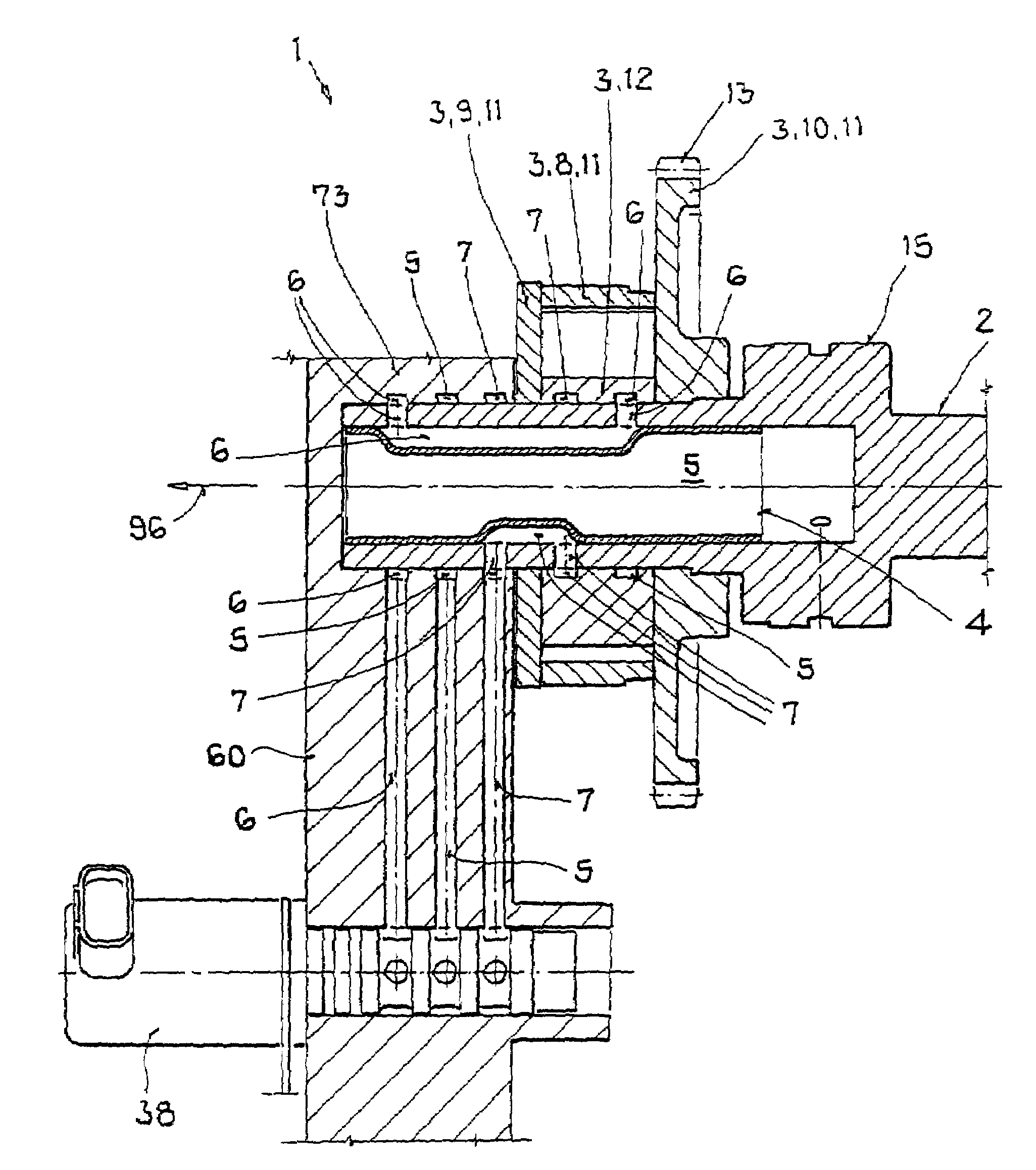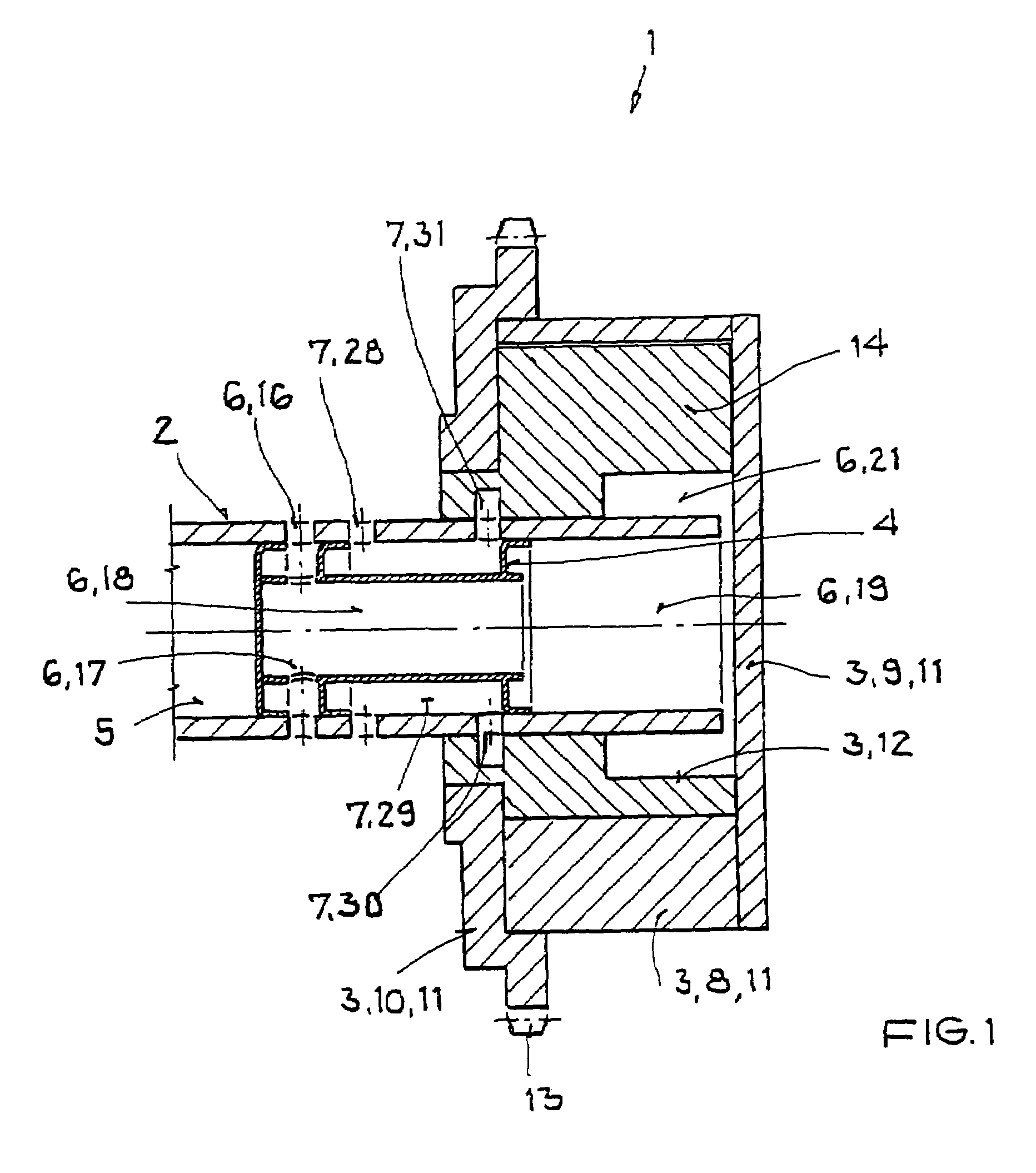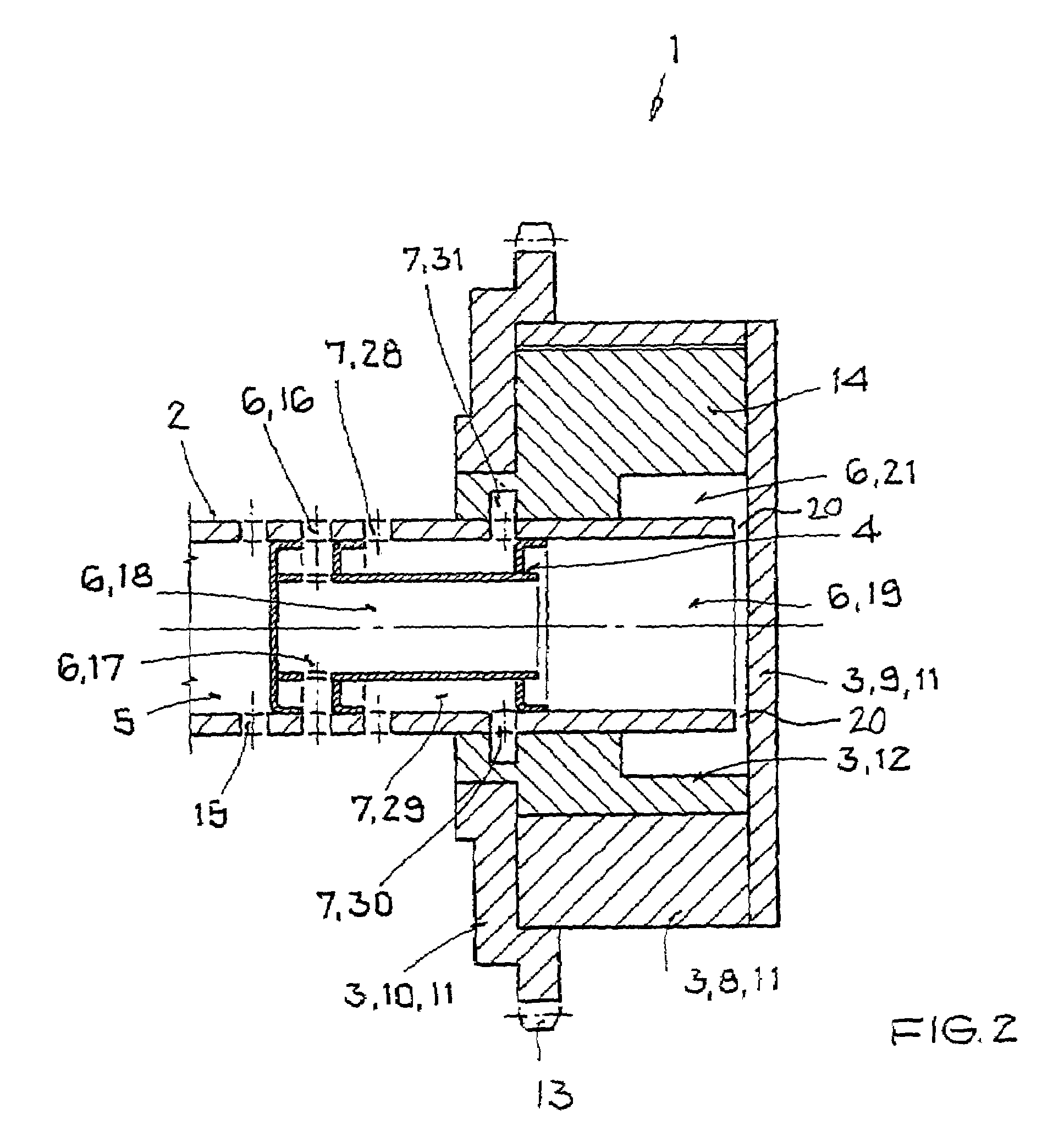Camshaft adjuster for an internal combustion engine having hydraulic medium guides
a technology of hydraulic medium and camshaft, which is applied in the direction of valve details, valve arrangements, valve drives, etc., can solve the problems of difficult to ensure the permanentity of the plastic part, the camshaft seat is fixed, and the oil foaming is not advantageous, so as to achieve easy and cost-effective production and simple and reliable supply of hydraulic medium.
- Summary
- Abstract
- Description
- Claims
- Application Information
AI Technical Summary
Benefits of technology
Problems solved by technology
Method used
Image
Examples
fourth embodiment
[0045]FIG. 4 shows camshaft adjuster 1 with an insert part 4. Insert part 4 is inserted, with a positive lock, into the hollow camshaft 2, which has a wave-shaped region 39 at its end, wherein this region is arranged in the region of an additional camshaft bearing 40. Since insert part 4 is inserted into camshaft 2 with a positive lock, it therefore also forms a corresponding wave-shaped region 41. The open end of hollow camshaft 2, which faces lid 9, (See FIG. 1) is closed off with a closure lid 42 that is arranged within insert part 4. Camshaft adjuster 1 has a locking mechanism formed from a bolt 43 and a pressure spring, not shown here, which can be activated hydraulically, and provides a rigid connection between inner body 12 and drive wheel 10 via an axial movement of bolt 43. This connection can be released by applying hydraulic medium to camshaft adjuster 1, in a targeted manner, and an adjustment is released.
[0046]To supply hydraulic medium to the camshaft adjuster, as show...
fifth embodiment
[0049]FIG. 5 shows a camshaft adjuster 1 wherein insert part 4 is structured as a combination molded part, the body of which consists at least predominantly of plastic or aluminum. Insert part 4 contains hydraulic medium guides 5, 6 and 7, at least in part, or forms them together with camshaft 2. Furthermore, insert part 4 has support elements 59 such as support rings or support ring segments, for example, which stand in mechanical contact with the inside wall of camshaft 2 in the installed state of insert part 4. Camshaft adjuster 1 includes hydraulic control valve 38 that is arranged outside camshaft 2, in housing 60 of the internal combustion engine. Camshaft adjuster 1 has the three hydraulic medium circuits 5, 6, and 7, which can be controlled via control valve 38, whereby part of the hydraulic medium circuits 5, 6, and 7 are formed via non-coaxial channels 61, and 62 in insert part 4.
[0050]Control valve 38 is supplied with hydraulic medium via a first hydraulic medium circuit ...
seventh embodiment
[0053]FIG. 7 shows a camshaft adjuster 1 with a one-piece insert part 4 that has cross-sections that change in the axial longitudinal direction 96, and with the hydraulic medium circuits 5, 6 and 7. Alternatively, it would be possible that insert part 4 has non-coaxial channels, for example according to FIG. 6, and / or contours with uniform and / or variable cross-sections over axial length 96, for example as shown in FIG. 7, or forms them together with camshaft 2.
PUM
 Login to View More
Login to View More Abstract
Description
Claims
Application Information
 Login to View More
Login to View More - R&D
- Intellectual Property
- Life Sciences
- Materials
- Tech Scout
- Unparalleled Data Quality
- Higher Quality Content
- 60% Fewer Hallucinations
Browse by: Latest US Patents, China's latest patents, Technical Efficacy Thesaurus, Application Domain, Technology Topic, Popular Technical Reports.
© 2025 PatSnap. All rights reserved.Legal|Privacy policy|Modern Slavery Act Transparency Statement|Sitemap|About US| Contact US: help@patsnap.com



